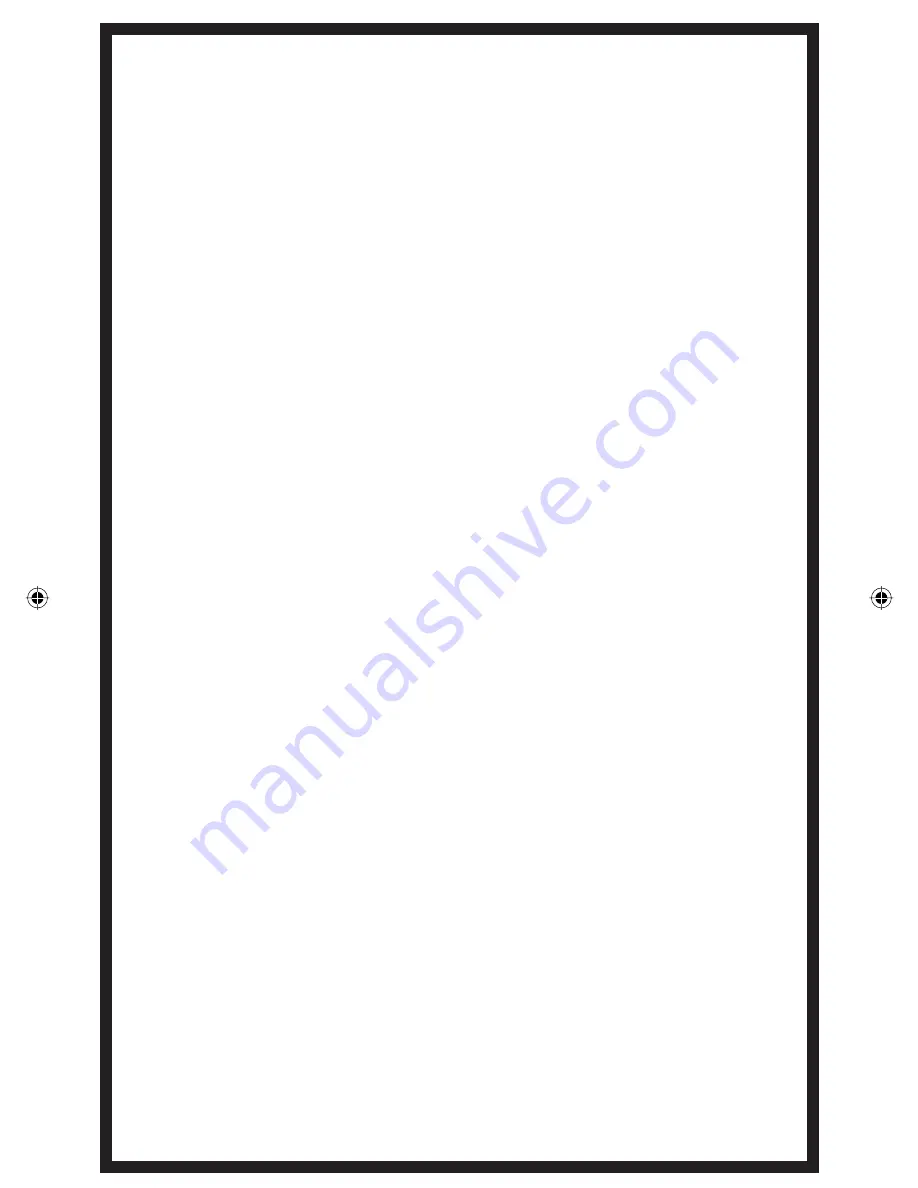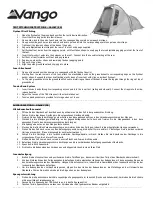
5
Customizing the door arrangement
There is a peg loop on either side of the vestibule door zipper where it
reaches the ground; by staking out one loop or the other, you can make
the door centre-opening or side-opening to adapt it to the prevailing
wind or local landscape features. The centre opening will provide best
ventilation; the side opening provides maximum sheltered storage space,
though it does require more crouching to enter or exit the tent.
Anchoring the Tent
The #7001-T6 aluminum stakes included with the tent are suitable for
general use on relatively soft ground. However, in very hard-packed
ground you will need stronger (and heavier!) stakes that can withstand
the force needed to drive them in. On snow, sand, or other loose-packed
surfaces, wider T-Stakes or aluminum snow stakes will hold better; these
stakes hold best buried horizontally. You can also improvise with other
“stakes” (hiking staffs, ice axes, branches, rocks, trees), using the tent’s
stake loops or cord as required.
When packing for your trip, consider the conditions you’ll likely encounter
and what sort of anchors you’ll require. You can often leave several of
the supplied pegs at home and replace them with improvised anchors,
thereby saving weight and space in your pack.
Ventilating the Tent
Proper ventilation is the key to minimizing condensation in any tent. Keep
fabric doors open as widely as the prevailing weather permits. If bugs
or drafts aren’t a problem, leave mesh doors open too. Crack each door
open from the top down; warm, moist air rises and will escape through
high openings. If the design of your tent allows for it, have openings at
both ends or both sides of the tent to allow air to fl ow through for best
ventilation. On very hot nights, when you are confi dent there will be no
rain or dewfall, you can leave the fl ysheet off and use the inner tent alone
as a “bug tent.”
Hummingbird 2 eng.indd 5
Hummingbird 2 eng.indd 5
3/1/05 2:35:13 PM
3/1/05 2:35:13 PM


























